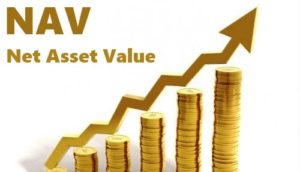There are going to be many goals you place along in life. Right after you start working, you are going to counter along a bunch of questions you ask yourself; the most likely being – ‘When do I start saving?’. Rings a bell, doesn’t it? It makes any person go into deep thought and questions the kind of savings you have made. The first step towards making a strong and fruitful saving is to ensure you have planned out your income and saving amounts. It is in fact the best way to grow your money – invest in early trade so that they bear fruit at a later stage.
The first and foremost step one must take when you are entering the world of saving money is to understand the best tools to put your money in. A mutual fund seems to be the perfect place to start your investment route and rightly so too. With the many options available today, the positive outcomes are there to be seen. There is a little bit of research you have to do when you are looking to making your first investment. The idea is to understand which fund would do well over a short and long horizon and then make a short list of mutual funds to invest in. So, what are the key indicators towards a good fund?
It is the probably the most important indicator towards the true value of a mutual fund. It indicates the total market value held by all the shares in the portfolio in cash and less of the liabilities divided by the number of units that are outstanding in the mutual fund. In simpler terms, the latest NAV of mutual fund signifies the book value held. It gets updated once a day and is usually after the close of the equity markets.
Contents [show]
Industry Specific:
Look at the kind of companies that come under the investment options – this could include blue chip companies, mid caps or very companies in a nascent stage. The key would be to understand what works according to you and what you see as an industry that would bring progress in the next few years. Once you have this covered, you would have a rough idea on the kind of growth you can see and how well you can get returns.
Growth points:
Each industry has specific growth charts and these can give you a fair idea on the next few years, thus giving you a further idea on the kind of returns you can expect. So, this only indicates the kind of profit booking you can look at in the next few years.
Past results:
You have the advantage of hindsight when you look at the results that have been garnered over the last few years and then make a calculated call on your investment. Look at the growth in individual years and a three year horizon. You’d have a much clearer idea that way.
Who is your advisor?
The role of your mutual fund analyst is as important as it gets, if you get this wrong – all of it is wrong. You need someone with a lot of experience under his/her belt and the vision to know what companies would prosper in the future. It gives you plenty of insight a lot of idea on the way the share can grow in time. It would also give you a sense of character about the kinds of investments made and portfolio held.
Many of us do not understand the benefits of investing in the mutual fund at the start but over the long term, you would know that you are saving up in the best possible way. You can literally see the money grow over a short period of time. You will understand that such an investment must be started as soon as you can so that the benefits are built up over a long term period. If you have been thinking about starting an investment – there could not have been a better time. The growth charts have shown that the sooner you start an investment of this sort, the better and more fruitful growth you can see.













